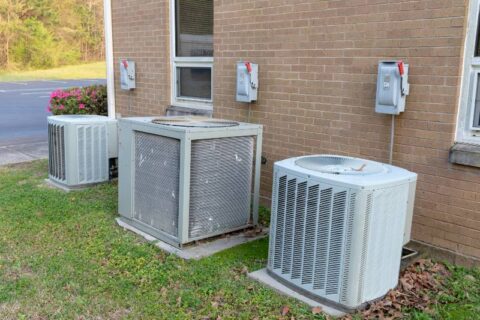5 Common Water Softener Problems and How to Fix Them
Your water softener works behind the scenes to remove minerals from hard water. With proper maintenance and care, the appliance should run smoothly for many years. Even so, your water softener may occasionally develop problems, many of which you can troubleshoot on your own. The next time you have water softener issues, follow these tips to find out what’s wrong.
Blockages
The calcium and magnesium in hard water can leave lime deposits in your water softener. Over time, this residue can cause clogs, resulting in delayed or continuously running regeneration cycles. Blockages most often occur in the brine tank, valve injector, brine line, or drain line. Check for clogs in these areas and clean or flush them to remove the blockage. This may require a professional’s help.
Salt Bridges or Salt Mushing
Salt bridges are layers of crusty salt that build up in the brine tank, leaving a gap between the water and the salt. Using high-quality salt can prevent this water softener problem. If you spot a salt bridge, poke it with a broom handle to break up the crust.
Similarly, salt mushing is when salt crystallizes on the bottom of the brine tank, forming a salty sludge. Drain, clean, and refill the brine tank with new salt to fix this problem.
Degrading Resin Efficiency
Over time, the resin beads in your water softening system lose the capacity to soften water effectively. You can help the beads work well by cleaning the resin tank every six months. But once you see sand-like particles in the resin tank, you know it’s time to replace the beads. Hire a professional to perform this task every seven years or as needed.
Broken Motor
When your water softener’s motor fails, the appliance can’t rotate between softening and regeneration mode, causing significant performance issues. If your water softener stops working, first check the cables and settings. If you suspect a failed motor, call a plumber to confirm the diagnosis and install a new motor if necessary. You may be able to replace the motor for free if it’s still under warranty.
Overflowing Brine Tank
The brine tank should have 8 to 14 inches of water in it when the tank is empty. This level increases when you add salt, which should always remain a few inches above the water.
An overflowing brine tank could be caused by a brine line blockage, malfunctioning water entry valve, clogged injector, or float valve set too high. Check these areas for malfunctions and refer to the user’s manual for instructions to fix them. When in doubt, call a plumber for help.
Parley’s PPM Plumbing, Heating & Cooling is the place to turn for expert water softener repair. We are a trusted Utah plumber with over 40 years of experience installing, maintaining, and servicing water softeners. To schedule a visit, please call 801-226-3033 if you live in Utah County, or reach us at 801-229-2665 if you’re a Salt Lake County resident. You can also contact us online.


